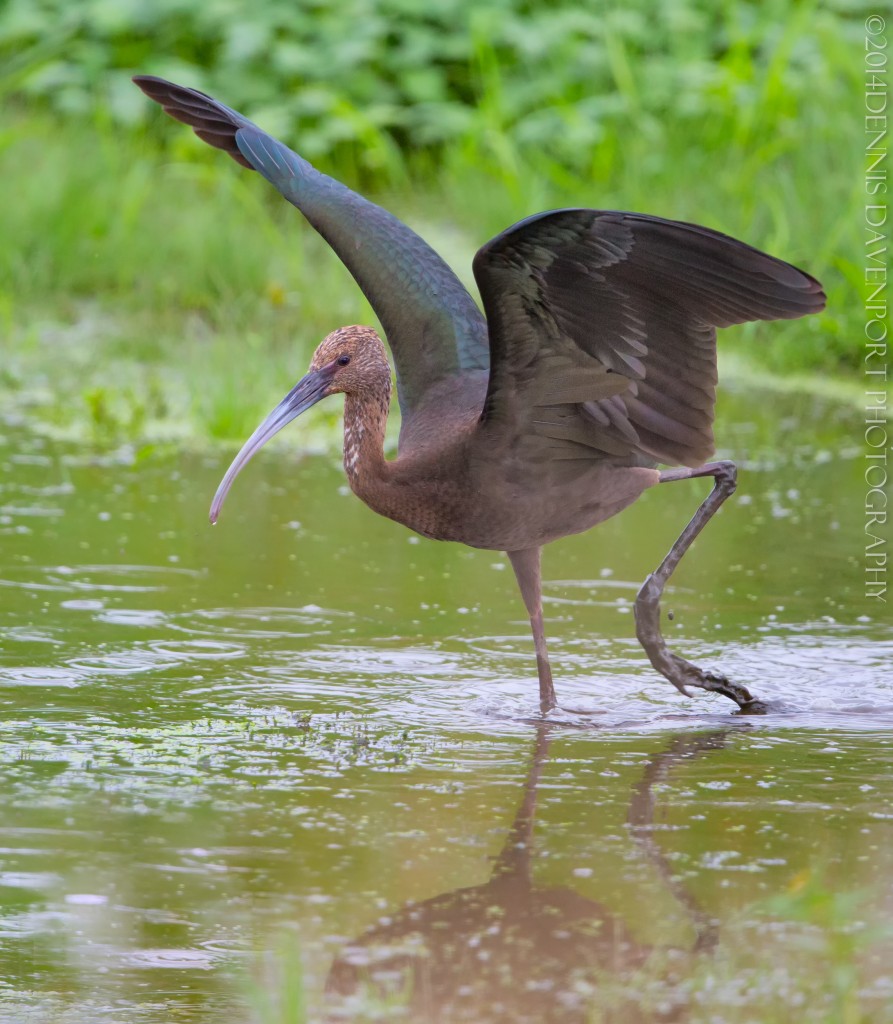This is a second image from probably close to 1,000 shots I took of this locally rare bird on Sep, 26, 2014, at the Ridgefield NWR in southwest Washington state. The juvenile bird got spooked (from natural causes) several times while I was photographing it throughout the day. It would take flight and circle around landing back in the same general area from which it left. So the bird apparently felt comfortable in the area it had discovered. During one of the spooking episodes I was able to capture a few images as it took to the air. This image is one as it began its takeoff where its left foot has dragged some mud up from the bottom of the shallow waterway.
The morning hours today sported a fairly low, dark overcast. This bird is almost constantly moving while it forages for food. It’s head is akin to a jack hammer as it plunges its long bill into the muck. And when it did lift its head up in an upright position, it didn’t stay there for more than a second. While it’s doing its jack hammering, it walks fairly rapidly, covering a lot of ground. So I shot all of today’s Ibis images at 1/1000th or faster to increase my chances of stopping the head movement. Canon 5D Mark III, 1/1250, f5.6, ISO 1250, 700mm, 9:51 a.m.
Performance note on the Sandisk 32GB 160 MB/s, (1067x) UDMA 7 compact flash card – I picked up this card recently for use in my 5D M3. Its first use was on this Sep. 26 shoot, and I noticed that in continuous shooting mode, it continued to fire and not slow down for longer than I was accustomed to with the Sandisk 60 MB/s cf card. I was pleasantly surprised that the buffer seemed to clear faster. This was a first impression and not scientific at all. I hope to do a better comparison sometime soon.
Also related to this, I was researching the 5DM3 as it relates to memory cards and speeds, and found several articles stating something to the effect that if you have an SD card in the 5DM3’s SD card slot, and you have a faster cf card in its slot at the same time, the camera will default to the slower speed of the SD card up to not faster than 133x, no matter what speed your SD card is rated for. So if you spend your money on a super fast cf card, and you want the fastest burst shooting performance (about 6fps), leave the SD card slot empty. Otherwise, you are not taking full advantage of the cf card’s write speed. If fast and effective burst shooting is important to you, it’s best to just leave the SD card slot empty in the 5DM3. For me it is inconsequential as I never have used the SD slot, but this is important information for those who may want to use both cards at once. In other words, for example, if I place a 600x SD card in its slot, and my new 1067x cf card in its slot, the camera will default to a maximum write speed of only 133x for both cards. This issue is probably not fixable by a firmware upgrade either. If anyone knows this to be erroneous information, please let me know! Thanks.
